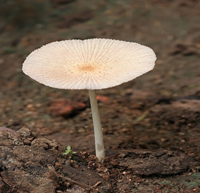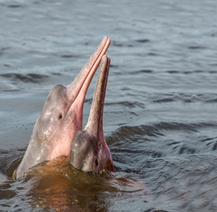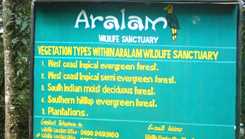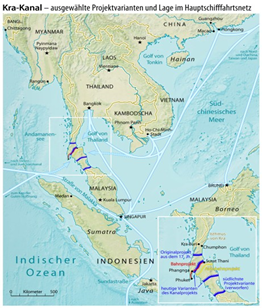

International Relations (GS-II)
Asia-Pacific Economic Cooperation

Leaders from the 21-member Asia-Pacific Economic Cooperation forum are going to meet in San Francisco in November for the 30th APEC summit.
About the Forum:
- APEC was founded in Canberra in 1989 as an informal dialogue forum to promote regional economic integration.
- APEC membership covers 38% of the global population, or nearly 3 billion people, about 62% of GDP, and almost half of global trade.
- APEC says it operates on the basis of non-binding commitments, open dialogue and equal respect for the views of all participants.
- Decisions are reached by consensus and commitments undertaken on a voluntary basis.
- APEC’s members are:
- Australia, Brunei, Canada, Chile, China, Hong Kong, Indonesia, Japan, South Korea, Malaysia, Mexico, New Zealand, Papua New Guinea, Peru, the Philippines, Russia, Singapore, Taiwan, Thailand, the United States and Vietnam.
- It is unique in grouping member economies rather than nations, allowing participation of Chinese-ruled Hong Kong, as well as self-ruled Taiwan, which China claims as its own.
- It does not include India, however, the world’s most populous country.
Science and Technology (GS-III)
Mizoram has the highest rate of cancer in India
Latest evidence from an 18-year trend study noted a consistent uptick in cancer incidence and mortality in Mizoram.
About the study:
- The study was recently published in the Lancet Regional Health — Southeast Asia.
- For the study, cancer incidence and mortality data were extracted from the Mizoram Population Based Cancer Registry (PBCR) spanning the years 2003–2020.
- PBCR was supported by funding from the National Centre for Disease Informatics and Research of the Indian Council of Medical Research.
Key Findings:
- The Study finds that, Cancer Incidence and Mortality is also growing among youthpossibly due to;
- Lifestyle patterns contributing to a genetic predisposition in an ‘endogamous population’.
- For Men: The most prevalent cancer site was the stomach, followed by head and neck, lung, oesophagus, colorectal, liver, urinary, non-Hodgkin’s lymphoma and prostate cancers.
- For Women: Lung cancer exhibited the highest incidence followed by cervical, breast, stomach, head and neck, colorectal, oesophagus, liver and ovarian cancers.
Science and Technology (GS-III)
First cases of avian flu found in Antarctic region
Recently, researchers have identified avian flu in the Antarctic for the first time, sparking worries about the impact on isolated penguin and seal populations.
Key Findings:
- The findings by researchers from the British Antarctic Survey (BAS) followed reports of several “potentially symptomatic birds and unexplained mortality” and;
- Further tests confirmed the presence of Highly Pathogenic Avian Influence (HPAI) in Antarctica.
- The HPAI was detected in brown skua (a predatory seabird) populations on Bird Island, South Georgia, making it the first known case in the Antarctic region.
- Based on trends, scientists fear HPAI may lead to a decline in the breeding populations of vulnerable fragile wildlife residing in the region.
- According to the researchers’ risk assessment, the most threatened avian group are gulls and skuas.
- They are followed by birds of prey such as hawks and caracaras, terns and shorebirds.
- Among marine mammals, fur seals and sea lions are reportedly most vulnerable, followed by southern elephant seals and dolphins.
Science and Technology (GS-III)
Nanophotonic Electron Accelerator (NEA)

Recently, the Scientists fired up Nanophotonic Electron Accelerator (NEA), world's smallest particle accelerator.
About:
- NEA consists of a small microchip containing an even smaller vacuum tube which is made up of thousands of individual pillars.
- Main goal of creating these accelerators is to utilise the energy given by accelerated electrons in targeted medical treatments for cancer.
- NEA is similar to Large Hadron Collider (LHC) as both create a magnetic field to accelerate particles.
- However, main acceleration tube of NEA (~0.02 inches long) is 54 million times shorter than 27- kilometre ring of CERN's LHC.
- Also, LHC uses more than 9,000 magnets to create magnetic fields and NEA works by firing light beams at pillars in vacuum tube.
- Particle accelerators are devices that speed up charged particles, (protons or electrons), at high speeds, close to speed of light.
- They are then smashed either onto a target or against other particles circulating in opposite direction.
- They are essential for fundamental research for an improved understanding of matter, discovery for particle and nuclear physics and for sciences that use x-rays and neutrons.
- They also have applications related to health, environmental monitoring, food quality, etc.
Science and Technology (GS-III)
Project Kusha
According to reports, India's own long-range air defence system, titled 'Project Kusha', is being developed by the Defence Research and Development Organisation (DRDO) recently.
About:
- India’s Defence Research and Development Organisation (DRDO) is developing its own long-range air defence system, similar to the Iron Dome, which will be capable of detecting and destroying incoming stealth fighters, aircraft, drones, cruise missiles, and precision-guided munitions at ranges of up to 350 kilometres.
- This new LR-SAM will have interception capabilities comparable to the Russian S-400 Triumf air defence system recently inducted by the Indian Air Force (IAF).
- It will feature long-range surveillance and fire control radars.
- Additionally, it will have different types of interceptor missiles that can hit hostile targets at 150-km, 250-km and 350-km ranges.
- The defence system will act as a deterrent against these hostile countries.
- China, in particular, is said to have installed several missile batteries across the Indo-Tibetan border, also known as the Line of Actual Control (LAC).
- Given the fact that China can fire missiles at India and can direct much of the Indian Air Force’s time and energy towards trying to neutralise such batteries and launching grounds.
Defense (GS-III)
India France Bilateral Naval Exercise ‘Varuna’ – 2023

Recently, the Phase II of the Varuna-23 bilateral exercise took place in the Arabian Sea.
Varuna-23 Naval Exercise in Arabian Sea:
- Participants included guided missile frigates, tanker, Maritime Patrol Aircraft, and helicopters from both Indian and French Navies.
- Objectives:
- The exercise focused on joint operations, underway replenishment, and tactical manoeuvres.
- Both navies aimed to enhance warfighting skills, improve interoperability, and demonstrate their commitment to regional peace and stability.
|
Varuna Exercise:
|
Environment (GS-III)
Candolleomyces albosquamosus

Researchers identify a new mushroom species from the Western Ghats.
About:
- The new species as belonging to the genus Candolleomyces, a relatively small genus with just 35 species recognised worldwide.
- The species has been named Candolleomyces albosquamosus - ‘albosquamosus’ for the white woolly scale-like structures on its pileus or cap.
- This mushroom variety grows to a height of just about 58 mm.
- The honey-yellow coloured pileus turns brownish-gray or brownish-beige with age.
- The ‘stipe’ – the stem or stalk of the mushroom – is white in colour and cylindrical.
|
In general, mushrooms constitute secondary saprophytic fungi of the forest ecosystem.
|
Environment (GS-III)
Global Declaration for River Dolphins

In a ground-breaking development, 11 Asian and South American countries recently signed a global declaration, the "Global Declaration for River Dolphins," aimed at preserving the world's six remaining river dolphin species.
About:
- This declaration is designed to guide 14 nations where river dolphins inhabit, with a focus on responsible freshwater dolphin conservation.
- It aims to halt the decline of all river dolphin species and increase the most vulnerable populations.
- The declaration will escalate collaborative endeavours to safeguard the surviving river dolphin species.
- Countries that adopted the declaration include Bangladesh, Bolivia, Brazil, Cambodia, Colombia, Ecuador, India, Nepal, Pakistan, Peru, and Venezuela.
- The countries involved agreed to improve water quality in the dolphins' habitat, create protected areas, tackle overfishing, and involve Indigenous communities in the affected regions in protecting the animals.
Personality in News
Norman Pritchard

October 30, marks the death anniversary of India's first Olympic medallist, Norman Peterson Pritchard.
About:
- India’s first brush with the Olympics came at the 1900 Paris Olympics - where Norman Pritchard was the country’s sole representative.
- He won two silver medals - in the 200m sprint and 200m hurdles.
- He was born in Calcutta (now Kolkata) on January 23, 1875 to parents George Peterson Pritchard and Helen Maynard Pritchard.
- Norman was a British citizen who represented India in the 1900 Olympics.
- He took part in the event while holding an Indian passport and an Indian birth certificate.
- While there is very written records about Pritchard, the International Olympic Committee (IOC) has listed him as an Indian.
Location in News
Aralam Wildlife Sanctuary

About:
- The Aralam Wildlife Sanctuary (AWS) is located in the southeast part of Kannur District of Kerala and covers an area of 55 Sq. Km.
- It is located on the Western Ghats and it is contiguous with the Brahmagiri Wildlife Sanctuary of Karnataka.
- Nagarhole National Park and Tiger Reserve lies to the east of Aralam Wildlife Sanctuary.
- Habitat: Elephant, wild boar, leopard, mongoose, nilgiri langur, hanuman langur, malabar giant squirrel, etc.
Location in News
Kra Isthmus

Recently, the initial idea was of a 90-km canal joining the Andaman Sea and Gulf of Thailand has been backed by China.
What is an Isthmus?
- An isthmus is a narrow strip of land that connects two larger landmasses and is bordered by water on two sides.
- It can be a natural formation or an artificial land bridge.
About the location:
- The Kra Isthmus is a narrow strip of land in Thailand that connects the Malay Peninsula to the mainland of Asia.
- The Kra Isthmus is located in southern Thailand, separating the Gulf of Thailand to the east from the Andaman Sea to the west.
Kra Canal:
- There have been longstanding discussions and proposals to construct a canal across the Kra Isthmus, known as the Kra Canal.
- The idea of constructing a canal across the Kra Isthmus has been discussed for centuries, dating back to the Ayutthaya Kingdom in the 17th century.
- This project would involve building an artificial waterway that would link the Gulf of Thailand with the Andaman Sea.
- The canal would potentially revolutionize maritime trade routes in the region.
Species in News
Amazon Pink river dolphins

The population of pink dolphins in the Mamirauá Sustainable Development Reserve in Amazon forest fell by 65 per cent between 1994 and 2016; dolphins are a good indicator of the degree of conservation of habitat.
About the species:
- The Amazon pink river dolphin is the largest and smartest out of the five freshwater species.
- A full-grown dolphin can grow up to 9 feet (2.7 meters) long, weigh up to 400 pounds (181 kilograms), and live to 30 years old.
- Their diet is the most diverse amongst toothed whales (especially during the wet season), consisting of more than 53 species, including piranhas.
- They also have unusually large brains, with 40 percent more brain capacity than humans.
- While they are known to be shy creatures, they are fascinatingly drawn to people, playing curiously with local children, and without demonstrating aggressive behavior.
- They also communicate using high-frequency sonar clicks to build a three-dimensional echogram of their dark riverine world.
Species in News
Curcuma kakchingense

hree researchers in Manipur recently discovered a new flowering plant species and have named the new species Curcuma kakchingense.
About:
- It is a new flowering plant species discovered in Manipur.
- It is a member of the angiospermic family Zingiberaceae, which includes well-known plants like Curcuma (turmeric), gingers, and cardamom.
- It is a robust plant, as tall as eight feet, having large terminal inflorescence.
- It was found thriving along the banks of the Sekmai River in the Kakching District of Manipur.
- It bears a striking resemblance to Curcuma longa, known locally as "Yaingung," and Curcuma phrayawan, a species from Thailand, but is distinguished by having lemon-yellow rhizomes with a very bitter taste.
Protection Status:
- It has been classified as "Data Deficient" (DD) under the IUCN Red List category.
- Importance of Curcuma plants:
- Several Curcuma species, including the turmeric (Curcuma longa are important for their use in cuisines, traditional medicines, spices, dyes, perfumes, cosmetics, and as ornamental plants.
- Curcumin and several curcuminoids found in curcuma species are non-toxic polyphenolic compounds that have biological activities.




